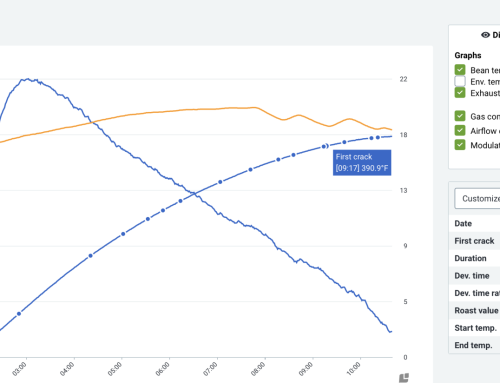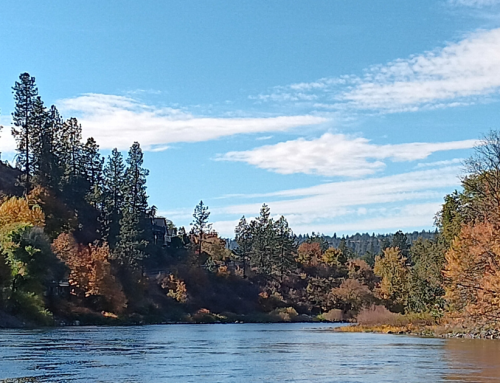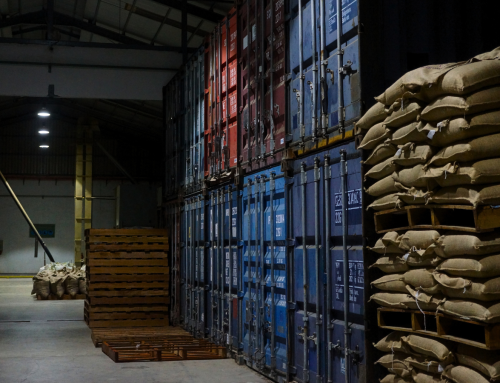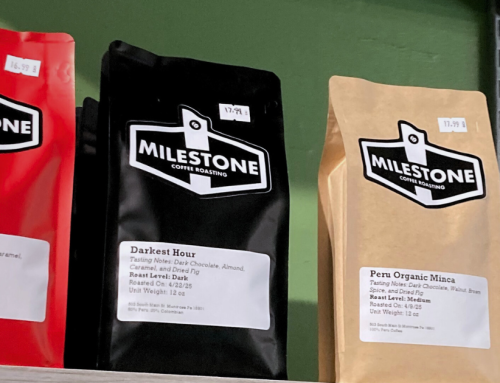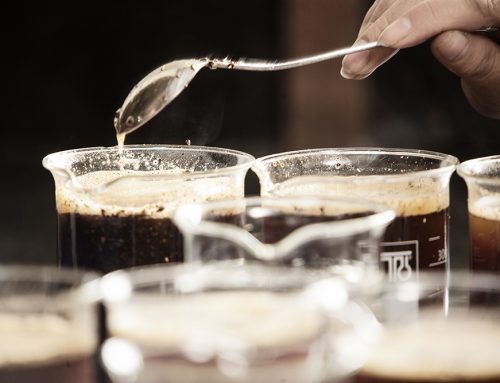If your coffee tastes off—too bitter, too weak, or just flat—the culprit could be the coffee grind size. The grind size directly affects extraction, flavor, and even the mouthfeel of your brew. Getting the coffee grind size right is essential whether you’re brewing at home or running a busy café.
Why Your Coffee Grind Size Matters
Brewing coffee is a science experiment. Think back to the days of Chemistry 101 in which we all found the saturation point in a beaker of water by adding in sugar or salt. Water will dissolve solids up to a certain point, and this rule applies to the dissolvable solids in coffee. We typically aim for a certain range of total dissolved solids in brewing a cup of coffee because this general range is what we perceive as palatable.
Adjusting the grind size on your grinder tends to be the easiest and best example of an independent variable in the experiment of brewing coffee.
Grind size determines how quickly water flows through the coffee grounds, which affects how much flavor is extracted.
- Too fine a grind: Over-extraction. Bitter, harsh flavors. The coffee will leave a drying feeling in your mouth.
- Too coarse a grind: Under-extraction. Sour, weak taste. The coffee will taste puckery, highly acidic.
Consistency in grind is just as important as the size. Uneven grinds can lead to both under- and over-extraction in a single cup. This is why choosing the right grinder matters just as much as selecting the right beans.
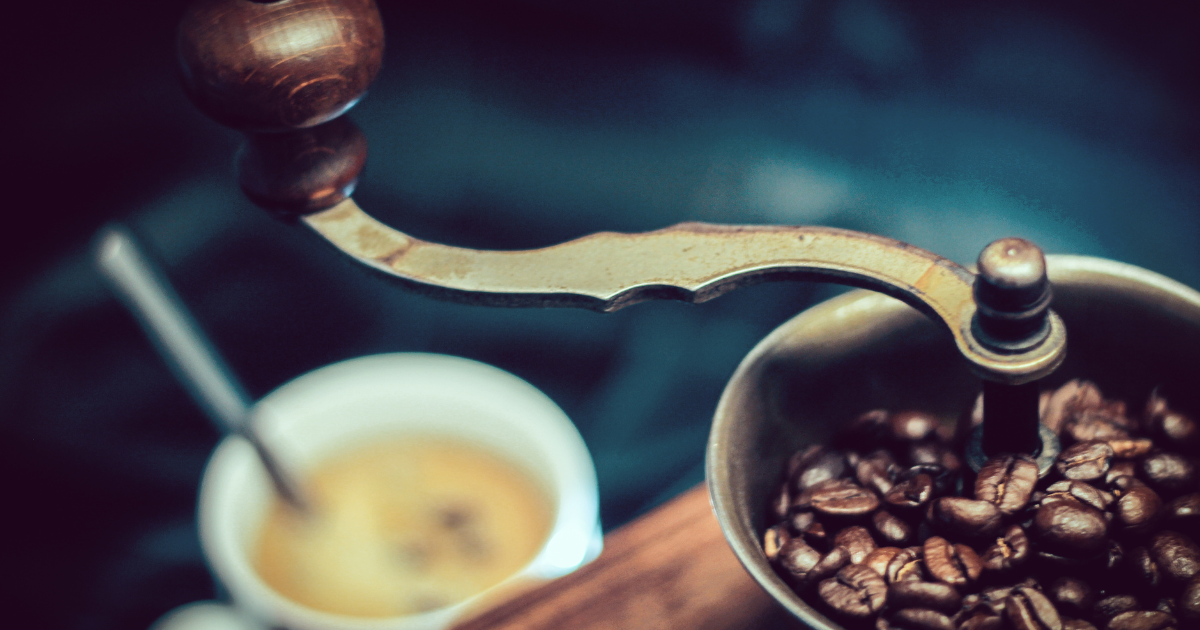
Manual coffee grinder | Pic by Tom Swinnen from Pexels
Matching Coffee Grind Size to Brewing Method
Different brew methods need different coffee grind sizes and tweaking your grind size for specific recipes can make brewing even more fun. But basic coffee grind size recommendations exist for a reason and exist to give coffee drinkers an idea of the roaster’s intention. Here’s a quick reference guide for you in look (eg – coarse sea salt) as well as in microns (eg – 800-1000 µm):
- Extra Coarse (rock salt – 1400-1600 µm) – Cold Brew – Cold brew coffee beans are ground pretty coarsely, both because of its extended brew time and its filtration, which usually isn’t quite as fine as the paper filter in a drip machine.
- Coarse (coarse sea salt – 1300-1400 µm) – French Press – While this helps with extraction (resistance isn’t really a concern, because the water’s just sitting there), it’s also largely because the filter of the French press would let too many small particles through if ground finer.
- Medium-Coarse (coarse sand/kosher salt – 1100-1300 µm) – Chemex – Recommended by Chemex, the medium-coarse grind pairs well with the thick paper filters in Chemex brewers. This combination slows the water flow rate just enough for proper extraction while still maintaining the clean, bright profile Chemex is known for. Flat-bottom drip coffee makers also benefit from this grind size because it promotes even water distribution across the coffee bed.
- Medium (beach sand – 800-1000 µm) – Drip Coffee Makers are a safe bet for Medium grind. This coffee grind size is great for the typical 4-5 minute brewing cycle of automatic drip makers.
- Medium-Fine (table salt – 500-700 µm) – Pour Overs – There are numerous pour-over devices. Common ones include Melitta, Kalita Wave, Hario V60, Bonmac, and Chemex. For single pour overs you might want to grind a little finer. If you’re using an Aeropress, try a medium-fine grind (their site recommends it).
- Fine (sugar – 200-400 µm) – Espresso – we need those fine particles because of the super-short brew time in espresso. They’re also very important for providing resistance to the water. Espresso is brewed under high pressure, which increases extraction speed, but without that fine grind enabling us to push those grinds super-close together, the pressurized water would just shoot through coffee bed too quickly for an even espresso.
- Extra Fine (flour-like – 40 – 220µm) – Turkish Coffee those super-fine particles help with the desired body of the coffee, but also because the coffee grounds are only in contact with really hot water for a short part of the brewing time. Those tiny particles are necessary for extraction speed.
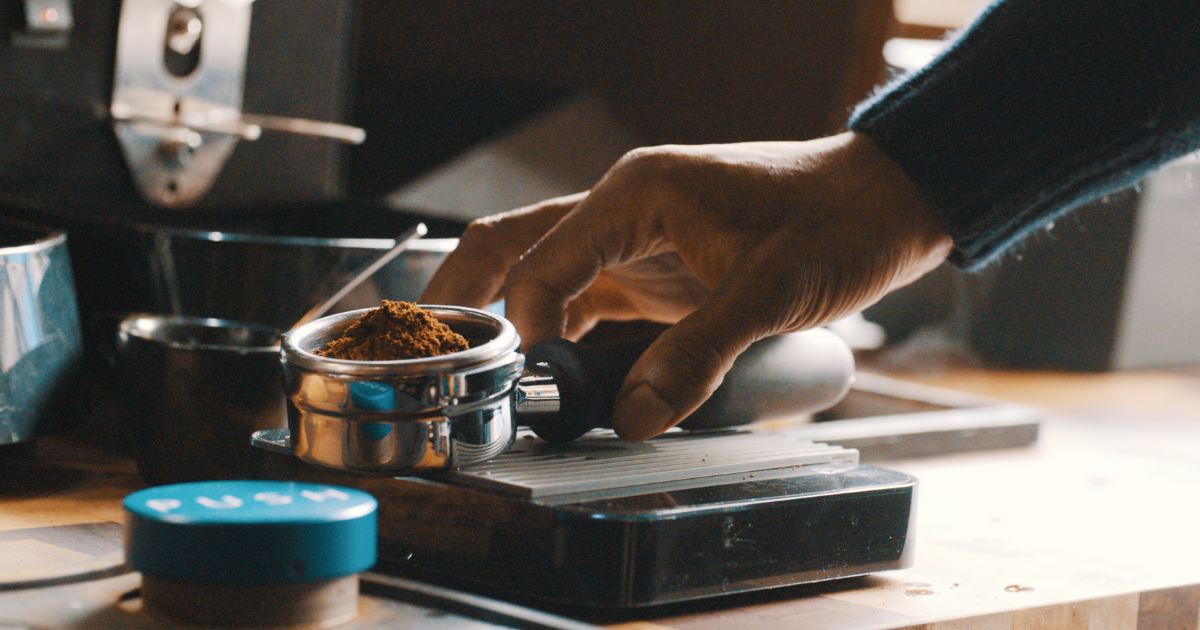
Fine coffee grind size for espresso | Img byKelly from Pexels
Coffee Grind Size Vocabulary – Sand And Salt?
You’ve probably read recipes that call for a grind size of “coarse sea salt” or “sand.” While this may have been helpful for some people, these descriptions are subjective. This will invariably lead to frustration when pairing brewers & grinders. Part of the problem is that burr grinders and blade grinders all change with age. Basically, grinders change over time, and with it goes the consistency of our coffee grind size. This will result in an uneven extraction. That said, we can use microns to measure coffee grind sizes as a workaround to calibrate our your coffee grinder and your brew recipe so you’re always dialed in! And check out our coffee filter guide for help selecting the right filter (for filtered coffee, that is) to go with your grind.
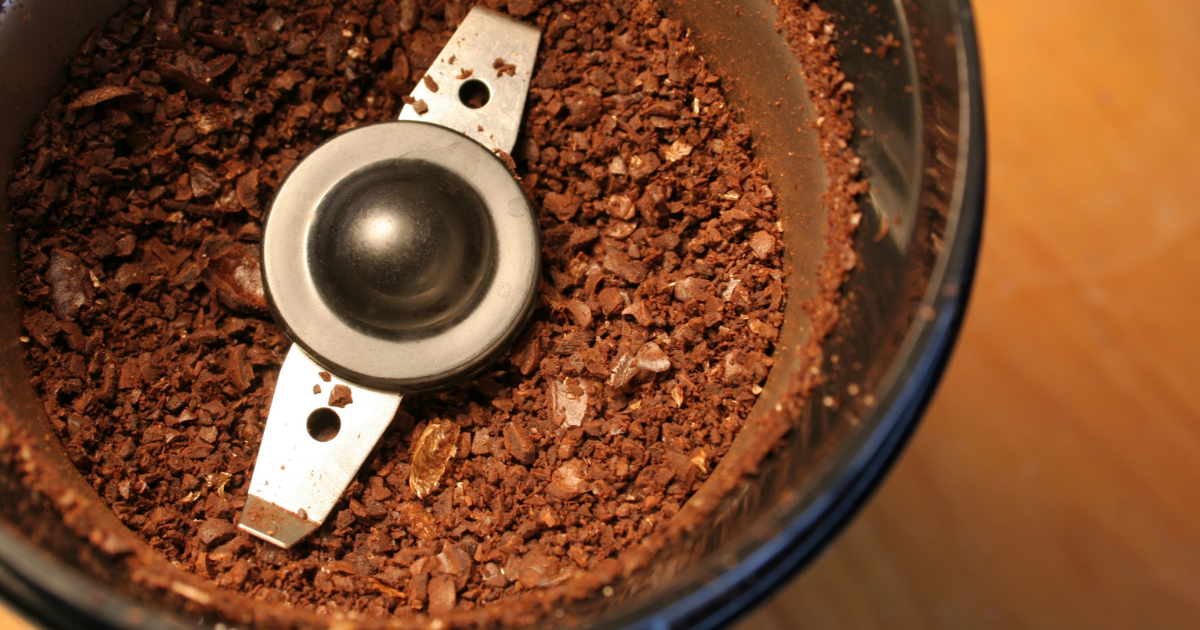
Blade coffee grinders lead to uneven coffee grind sizes | Img ca2hill from Getty Images
Home Grinders: Getting a Consistent Coffee Grind Size
For home brewers, burr grinders are the way to go. They crush beans uniformly, unlike blade grinders that chop unevenly.
Top Picks for Home Burr Grinders:
- Baratza Encore – Excellent for beginners; reliable and adjustable.
- OXO Conical Burr Grinder – Easy to use and consistent.
- Fellow Ode – Sleek design with flat burrs for even particle size.
These grinders work well for everything from French press to AeroPress.

Mahlkonig professional coffee grinder. Coffee shops and coffee pros use these to get consistent coffee grind sizes | Img by Quang Nguyen Vinh from Pexels
Commercial Grinders for Cafés and Roasteries
Professionals need precision, speed, and durability.
Top Commercial Grinder Brands:
- Mahlkönig EK43 – Known for ultra-consistent particle size; ideal for cupping and filter coffee.
- Mazzer Major / Robur – Sturdy and reliable for high-volume espresso service.
- Nuova Simonelli Mythos – Precise temperature stability, great for specialty cafes.
- Ditting KR1203 – Designed for large batches; popular in roasteries for bulk grinding.
A good commercial grinder can pay for itself in time saved and consistency delivered.
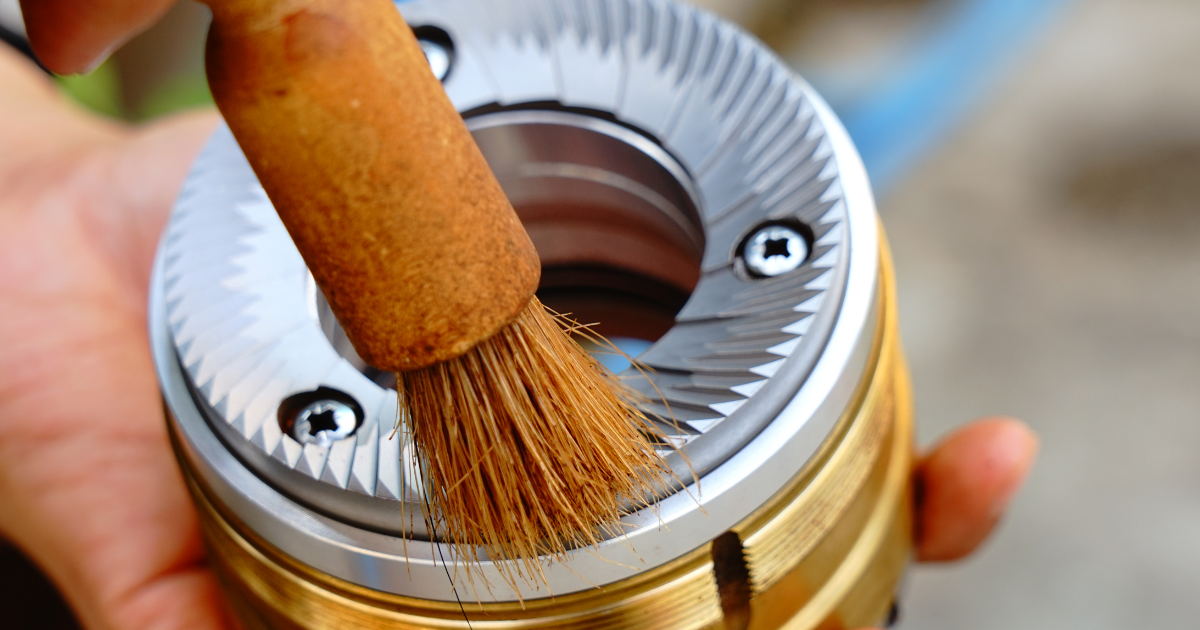
Regular maintenance and cleaning your coffee grinder will help it last | Img by Supersmario from Getty Images Signature
What Can Break a Grinder (and How to Avoid It)
Grinders, whether at home or in a shop, aren’t indestructible. Some common causes of grinder failure:
- Stones or debris in the beans: Always inspect or use a destoner.
- Overheating: Long grinding sessions without breaks.
- Poor cleaning habits: Old coffee oils and particles cause jams.
If your grinder breaks, don’t panic. Here are a few tips:
- Home users: Contact the manufacturer. Many have great customer support and replace parts.
- Cafés: Keep a backup grinder on hand. Service contracts with espresso techs can save your business during a grinder emergency.
Grinder Lifespan
- Home Grinders: 5–8 years with regular cleaning and moderate use.
- Commercial Grinders: 3–5 years under heavy use, but burrs may need replacing every few months depending on volume.
Pay attention to burr wear—dull burrs mean inconsistent grinds.
Storage Tips for Roasters
If you roast or buy green coffee, proper storage is key to freshness and grind quality. Check out our guide to storing green coffee to keep your beans in top condition until it’s time to grind.
Final Thoughts
Grind size isn’t just a preference—it’s a science. Whether you’re brewing a single cup at home or crafting hundreds a day in a café, knowing your grind sizes and using the right equipment will drastically improve your coffee. The right grind can be the difference between “just okay” and unforgettable.
Start with the right grind, and you’re halfway to a better cup.

